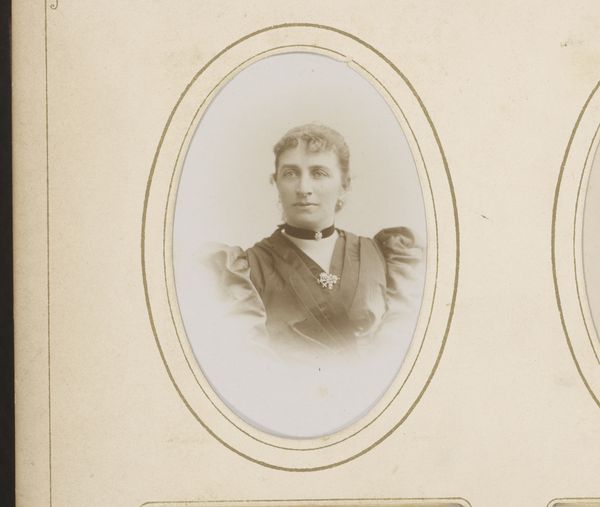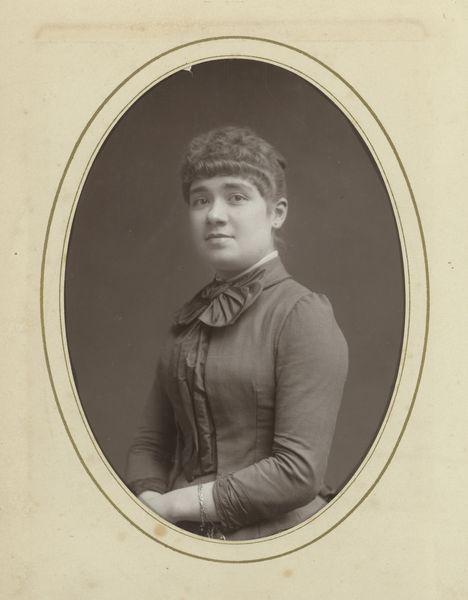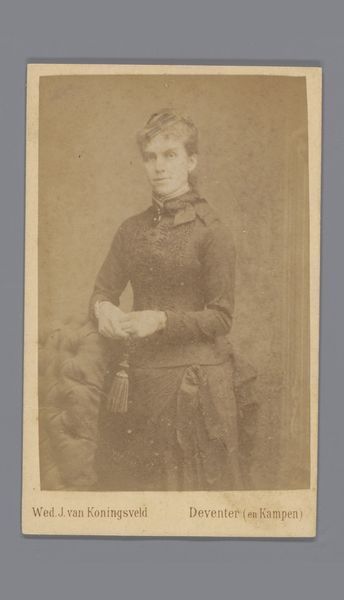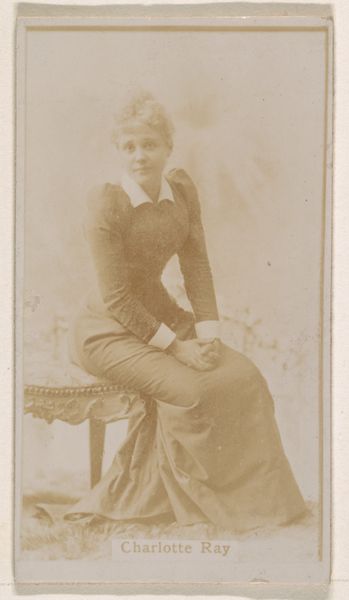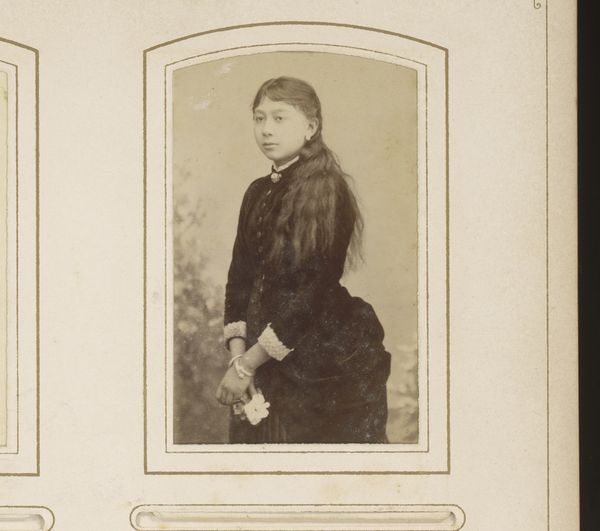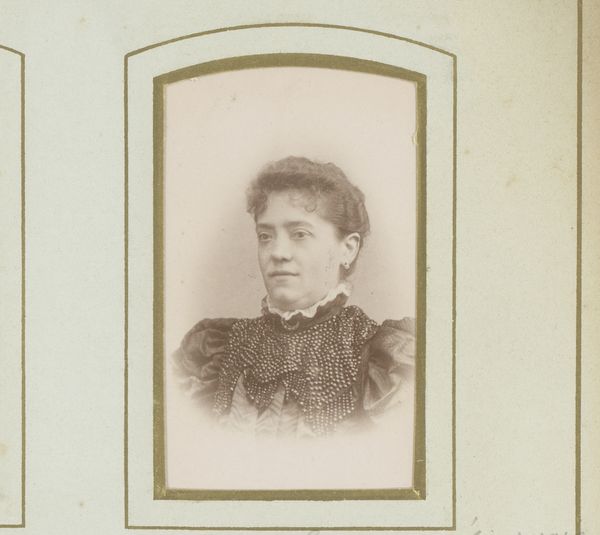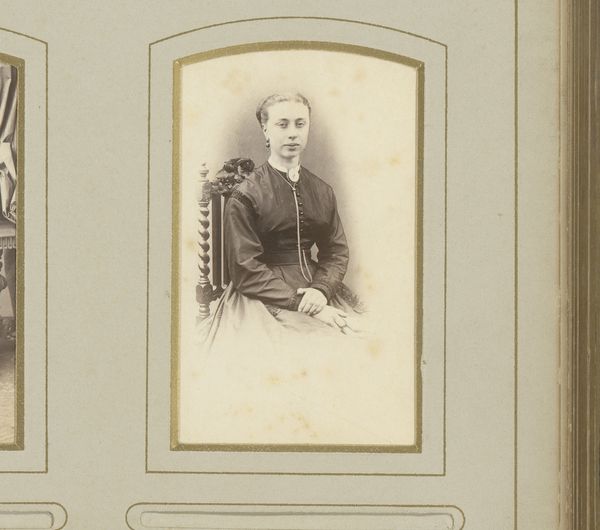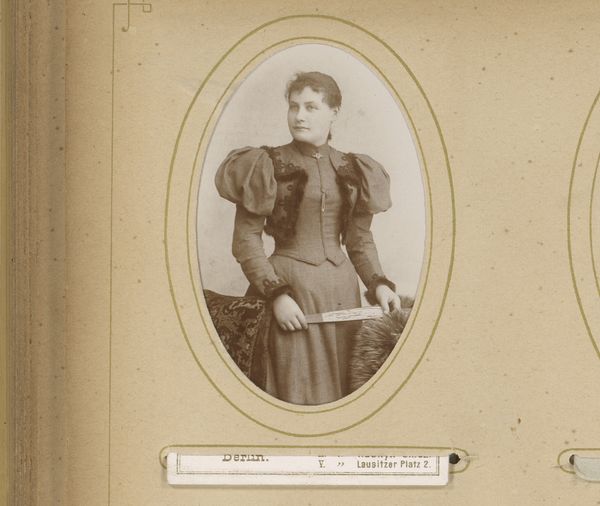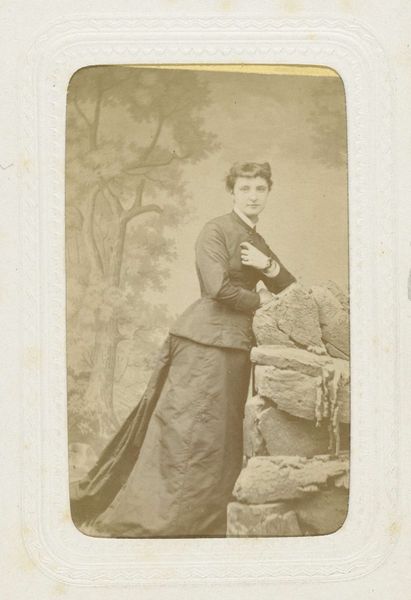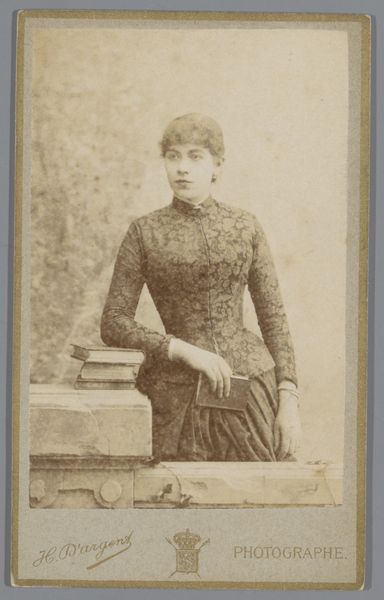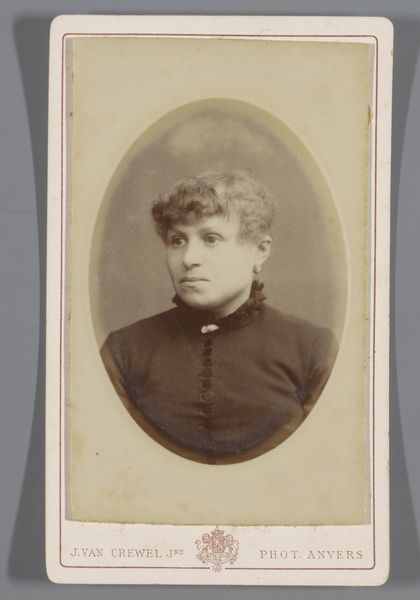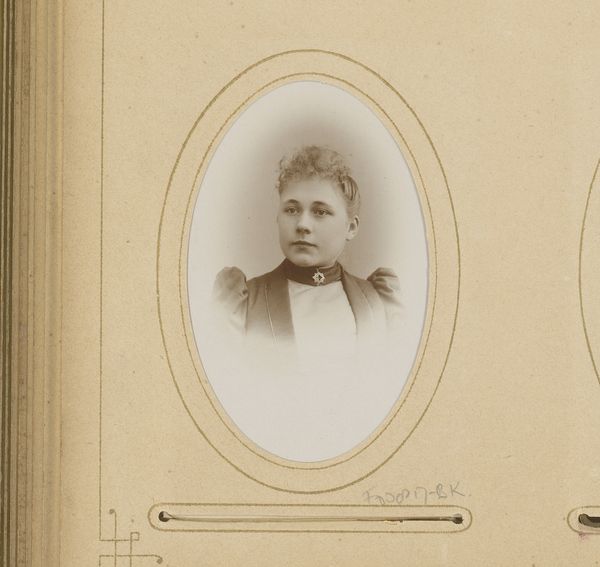
photography
#
portrait
#
photography
Dimensions: height 83 mm, width 52 mm
Copyright: Rijks Museum: Open Domain
Curator: The work before us, titled 'Portret van een meisje leunend op een hek, aangeduid als nichtje Jesse,' which translates to "Portrait of a Girl Leaning on a Fence, Referred to as Niece Jesse," by H.F. van Dorp. Its estimated creation lies sometime between 1880 and 1920 and utilizes photography as its medium. Editor: My initial impression is one of gentle melancholy. The subdued tones and the girl’s somewhat wistful expression evoke a sense of quiet reflection. There's a formal beauty to the composition, framed as it is in this oval shape, but it doesn't quite escape a feeling of solemnity. Curator: Right, and to expand on that solemnity, photographic portraiture of this period had immense social meaning. Families began displaying these portraits of loved ones, and photography started becoming a vehicle for capturing and solidifying class and family dynamics, as well as making visual statements about technological advancement and increased consumption, of course. The framing that you've identified makes this even more of a collectible 'artifact', even a sign of wealth. Editor: I see what you mean. That subtle hand-coloring certainly hints at luxury. And thinking purely about the aesthetics, the framing draws the eye directly to her face. Her delicate features are further softened by the photographic process itself, which lends the entire piece a dreamlike, almost ethereal quality. Consider also that there's a tension between the textured backdrop—blurred, suggesting an outdoor setting—and the stark clarity of her portrait. Curator: It is indeed an intentional contrast. Her gaze seems to address the viewer directly, even from within the frame. The choice to show her posed this way, leaning on a wooden structure, likely also signifies a connection to the land and to the kind of pastoral, middle class, 'natural' lifestyle being sold, and increasingly possible at this point in time, in the colonial state. Editor: Yes, there's an almost romantic sensibility here in the softness and stillness of the scene. Though it hints at underlying complexities within that family. Curator: Absolutely. Analyzing it through the lens of social history makes the entire production of this artifact come to life, almost like its own statement about industrialism's rise in the colonial state and the expansion of individualist identities in the era, whilst, with you bringing attention to its formalism, one may better appreciate the photographer’s skill. Editor: Exactly, looking more closely at the formal features allowed us to understand so much of what this photographic portrait means to society at that time.
Comments
No comments
Be the first to comment and join the conversation on the ultimate creative platform.
